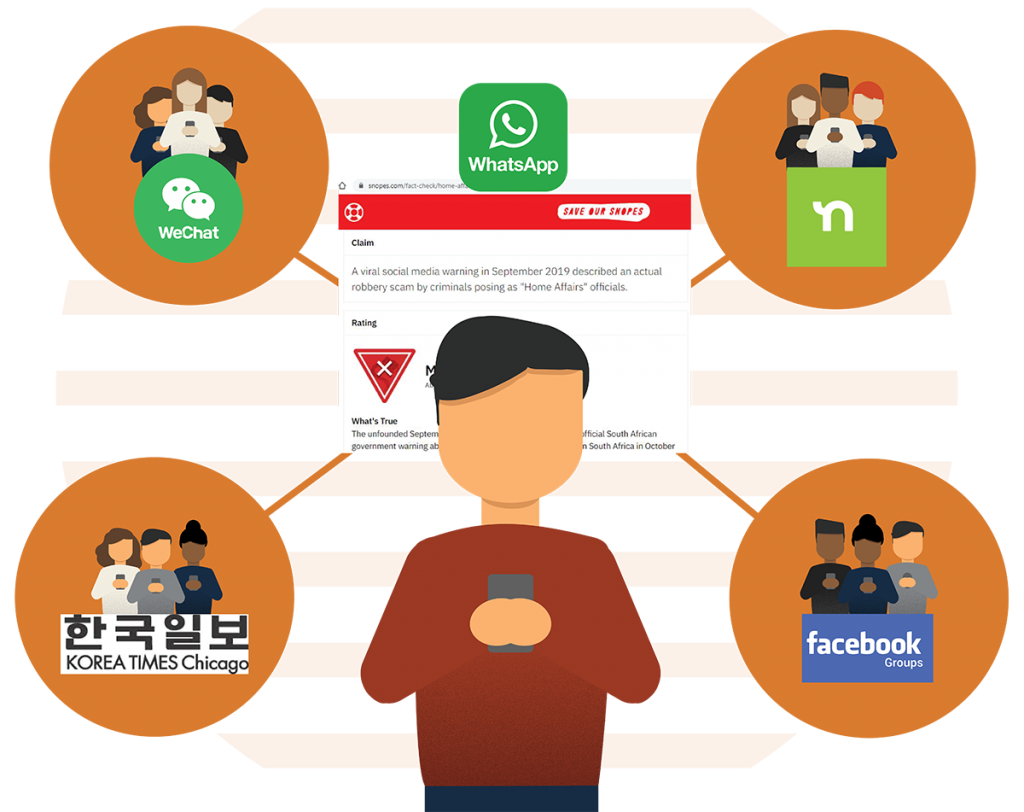When You Don’t Realize You’re Spreading Disinformation
A wide variety of disinformation threats surfaced during the lead-up to the decennial Census in 2020.
One example in particular, which surfaced before and during the data collection period during which U.S. Census workers were going door-to-door to conduct routine data collection via surveys, demonstrates how mis- and disinformation can be spread inadvertently, even by well-meaning people.
 During 2020, a hoax spread on WhatsApp -- an international messenger app that connects millions of people worldwide -- among a group of Arab Americans. The hoax suggested that robbers were impersonating workers from the U.S. “Home Affairs” department and using the census to rob homes. Of course, the United States does not have a Home Affairs Department. This false story originated based on a real event in South Africa in 2017 -- three years before the U.S. Census Bureau began its 2020 survey.
During 2020, a hoax spread on WhatsApp -- an international messenger app that connects millions of people worldwide -- among a group of Arab Americans. The hoax suggested that robbers were impersonating workers from the U.S. “Home Affairs” department and using the census to rob homes. Of course, the United States does not have a Home Affairs Department. This false story originated based on a real event in South Africa in 2017 -- three years before the U.S. Census Bureau began its 2020 survey.
Even though the U.S. Census Bureau, Snopes and other news outlets debunked this hoax early on and civil rights groups like the Arab American Institute and Asian Americans Advancing Justice (AAJC) convinced social media platforms to remove the content, the hoax continued to scale -- or spread -- in various forms.
While the story was false, it was disseminated as a warning on a physical flyer, was translated into Mandarin, and then shared as a photo in a WeChat group of Chinese immigrants. It was shared as the basis for a news article in the Korea Times Chicago. It was shared on NextDoor multiple times by concerned neighbors. It was shared within local Facebook groups in at least 10 U.S. states. Police departments shared it on Facebook as a pre-emptive warning, in case it was real, which in turn prompted already fearful communities to amplify it more.
The hoax was not intentionally or maliciously spread by bad actors seeking to undermine trust in the U.S. Census Bureau’s operations. Rather, it scaled far and wide because well-intentioned people wanted to protect their neighbors. The rapid spread of this hoax was also bolstered due to the broader climate of fear and mistrust in the government at the time. The story validated many communities’ fears and world views.
Spitfire partnered with the Arab American Institute and other civil rights groups to try to stop the spread of this hoax. We needed to tread carefully and understand that the fear many people felt was not only valid but also a deeply seated emotion. We knew that any message would need to be delivered by a trusted messenger, as opposed to someone representing the U.S. Census Bureau, and would need to address fears by equipping audiences with the tools they need to feel safe. We took the opportunity to combat the hoax, but also to inform audiences about when to expect visits from U.S. Census workers, how to verify their identity and who to contact if they are uncertain. We prepared the message and partnered with a trusted messenger from each of the online communities where the hoax was scaled in order to disseminate the message to their communities. You can read the balancing message we created below:
"Luckily, this is not a real threat! This is an old message that has been going around since 2017 on different messaging apps and social media, about an incident in South Africa at that time. (There is no Home Affairs Department in the U.S.!)."
U.S. census workers WILL be making visits to homes between September and January to verify addresses for next year's Census count, which is a common practice to prepare for every Census. You can and should always ask for verification if a census worker knocks on your door. All census workers making visits have a valid ID from the U.S. Department of Commerce. If you are uncertain about their identity, you can call 800-923-8282 to speak with someone from the Census Bureau.
If you want more information or have any questions about census workers visiting your neighborhood, you can always reach out to the Arab American Institute."
Resources
To learn more about the inadvertent spread of mis- and disinformation, please visit our module on Recognizing Your Role in Amplifying Disinformation.
To learn more about crafting compelling messaging, including balancing messages as demonstrated above, to curb mis- and disinformation, please visit our module on In-Channel Balancing Messaging.
